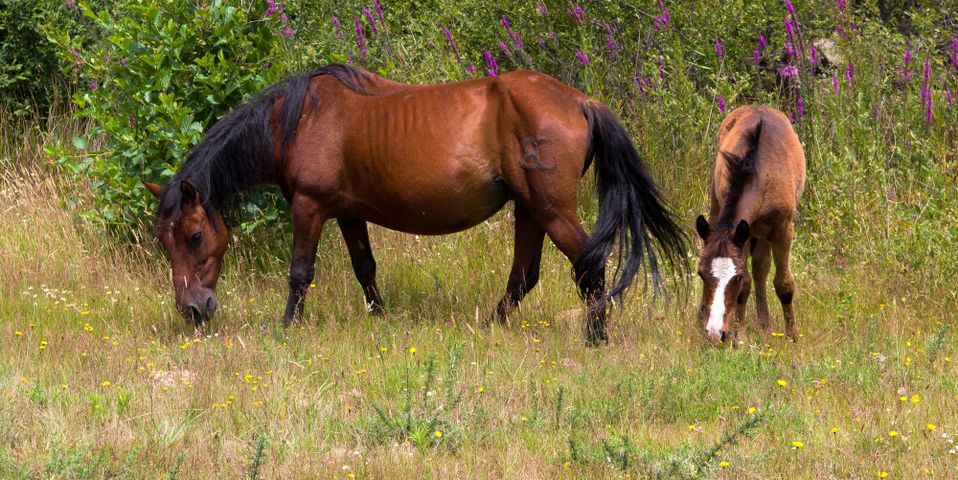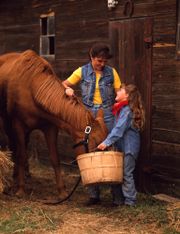3 Types of Horse Feed & Their Uses

Understanding animal feeds and how they relate to age, activity levels, and health is important for every horse owner. Properly balanced meals lay the foundation for overall care. This article clarifies what the three basic types of horse feed are and when they should be provided.
What Should Horses Eat?
1. Roughage
All horses need to eat roughage as the bulk of their diet. Composed of hay and pasture grasses, horses should consume 1-2% of their body weight in it daily. Its rough fibers help the digestive system function properly, and it provides minerals and vitamins as well as slow-burning energy.
Pleasure, trail, or maintenance horses can live on a diet of roughage alone. If they are provided with grain, it should be no more than two pounds per day.
2. Concentrates
 This type of animal feed includes pellets, sweet feeds, grains, and cereals. Low in fiber and high in energy, they should be provided to working horses, broodmares, foals, and yearlings. Although these animals all require extra nutrition, consumption varies.
This type of animal feed includes pellets, sweet feeds, grains, and cereals. Low in fiber and high in energy, they should be provided to working horses, broodmares, foals, and yearlings. Although these animals all require extra nutrition, consumption varies.
Some need a few pounds, while animals working over four hours a day can consume up to ten pounds of concentrates in addition to roughage. Start with small amounts, since excess grains cause undesirable behaviors, colic, and digestive upsets. If weight gain is needed, use a corn-based feed. Its high-calorie content provides accessible energy.
Sedentary animals can be fed a lower energy grain, such as oats. Manufacturers of pelleted concentrates work with nutritionists to create balanced feeds. This allows owners to choose the formula that fits their horse’s situation. Additionally, picky eaters benefit from pellets as they cannot selectively refuse ingredients.
3. Complete Feed
This is a concentrated feed that includes grains and fibers. Common ingredients are alfalfa, beet pulp, and grain hulls. It is also fortified with vitamins, minerals, and protein. Use it for horses who cannot chew hay, or when hay is too difficult or expensive to buy.
Horses eating complete feed should not need additional roughage. Check for labels that say, “designed to be fed without forage.” Unlike fortified feed or concentrates, it needs a crude fiber content of at least 25%. Portion it into multiple small feedings.
While an average animal requires 15-20 pounds of feed per day, it should not be given more than five at a time. This satisfies the horse’s inclination to graze and avoids overwhelming their digestive system. If the horse begins to develop undesired chewing behaviors, supplement with a minimal amount of leafy forage. Remember to make feed changes gradually. Sudden diet switches can create adverse side effects.
When you need to purchase animal feed, visit Carhart Feed & Seed Co. in Dove Creek, CO. Their staff will be happy to help you with nutrients they have in stock for your horse. Call them today at (970) 677-2233 to learn more about their products.
About the Business
Have a question? Ask the experts!
Send your question

